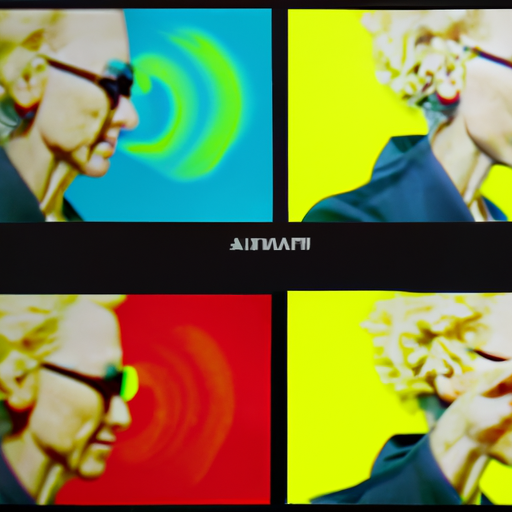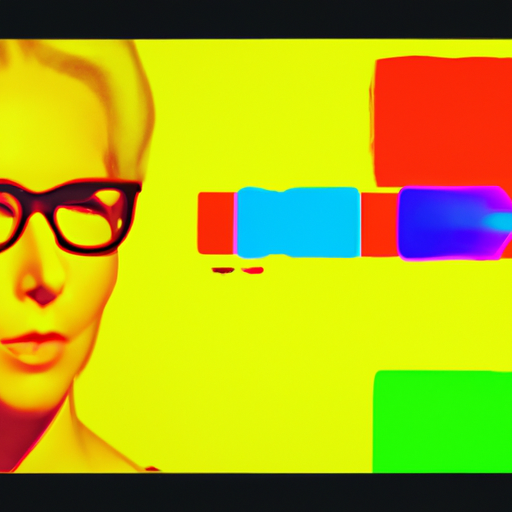
-
Table of Contents
Art and Music: Creating Visuals for Sound

Art and music have long been intertwined, with artists often finding inspiration in the melodies and rhythms that surround them. However, in recent years, there has been a growing trend of artists and musicians collaborating to create visuals that enhance the auditory experience. This article explores the fascinating world of creating visuals for sound, examining the techniques, tools, and impact of this unique art form.
The Power of Visuals in Music
Music has the ability to evoke emotions, transport us to different places, and tell stories without words. However, when combined with visuals, the impact can be even more profound. Visuals have the power to enhance the emotional connection to music, providing a multi-sensory experience that engages both the eyes and ears.
One example of the power of visuals in music is the use of music videos. Music videos have become an integral part of the music industry, with artists using them to bring their songs to life visually. These videos often tell a story or convey a specific message, adding depth and meaning to the music. For example, the music video for Michael Jackson’s “Thriller” not only features the iconic song but also tells a horror story through visuals, creating a lasting impact on the viewer.
Creating Visuals for Sound
Creating visuals for sound is a complex process that requires a deep understanding of both art and music. Artists and musicians collaborate closely to ensure that the visuals complement and enhance the music, rather than distract from it. There are several techniques and tools that artists use to create these visuals:
- Animation: Animation is a popular technique used to create visuals for sound. Artists can create animated videos or sequences that synchronize with the music, adding movement and visual interest. This technique allows for endless possibilities, as artists can bring their imagination to life through animation.
- Projection Mapping: Projection mapping is a technique that involves projecting visuals onto three-dimensional objects or surfaces. This technique is often used in live performances, where visuals are projected onto stages, buildings, or even the artist themselves. Projection mapping adds a dynamic and immersive element to the music, creating a visually stunning experience for the audience.
- Interactive Installations: Interactive installations combine art and technology to create immersive experiences for the audience. These installations often respond to sound, allowing viewers to interact with the visuals through their movements or voice. For example, the “Rain Room” installation by Random International uses sensors to create a rain-like environment that responds to the presence of the viewer, creating a unique and interactive experience.
Case Studies: Successful Collaborations
There have been numerous successful collaborations between artists and musicians that have resulted in visually stunning and emotionally impactful experiences. Two notable case studies are:
1. Radiohead’s “House of Cards” Music Video
In 2008, Radiohead released the music video for their song “House of Cards,” which was created entirely using data visualization techniques. The video features no cameras or traditional filming, but instead uses lasers and 3D plotting technologies to capture and visualize the band members’ movements and facial expressions. The result is a mesmerizing and abstract visual representation of the music, adding a unique and innovative element to the song.
2. Björk’s “Biophilia” Project
Björk’s “Biophilia” project is a multimedia endeavor that combines music, apps, and interactive installations. The project explores the relationship between music, nature, and technology, with each song accompanied by a unique app and interactive experience. The visuals for the project range from animated videos to interactive installations, creating a cohesive and immersive world that enhances the music.
The Impact of Visuals in Music
The use of visuals in music has had a significant impact on both the artists and the audience. For artists, visuals provide a new medium for self-expression and creativity. They allow artists to push the boundaries of their art and explore new ways of connecting with their audience. Visuals also provide an opportunity for collaboration, allowing artists and musicians to work together and create something truly unique.
For the audience, visuals enhance the music listening experience, making it more engaging and memorable. Visuals can transport the audience to different worlds, evoke emotions, and create a deeper connection to the music. They also provide a visual representation of the artist’s vision, allowing the audience to better understand and appreciate the music.
Conclusion
The combination of art and music has always been a powerful force, but the addition of visuals takes this connection to a new level. Creating visuals for sound allows artists and musicians to collaborate and create multi-sensory experiences that engage and captivate the audience. Whether through animation, projection mapping, or interactive installations, visuals have the power to enhance the emotional connection to music and create a lasting impact. As technology continues to advance, we can expect to see even more innovative and awe-inspiring collaborations between artists and musicians, pushing the boundaries of what is possible in the world of art and music.
